The Library of Consciousness
of Consciousness
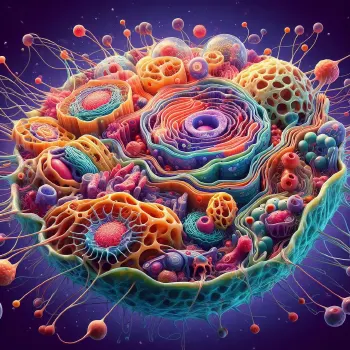
When a number of systems become integrated so that a new level of control emerges, we say that a metasystem has formed. We refer to this process as a metasystem transition. A metasystem transition is, by definition, a creative act.

Autopoiesis, a concept introduced by biologists Humberto Maturana and Francisco Varela in the 1970s, refers to the self-maintenance and self-reproduction characteristic of living systems. It emphasizes the dynamic processes through which living organisms continuously create and recreate themselves. At its core, autopoiesis proposes that living systems are defined by their ability to autonomously produce and sustain their own organization and identity. This concept underscores the self-referential nature of living systems, highlighting their capacity to regulate and maintain their internal structures despite changes in their environment. Autopoiesis has been influential not only in biology but also in fields such as cognitive science, psychology, and sociology, where it has been applied to understand the self-organizing principles underlying complex systems and phenomena.
Central to the concept of autopoiesis is the idea of “structural coupling,” which describes the ongoing relationship between a living system and its environment. Through structural coupling, living organisms interact with and adapt to their surroundings while simultaneously preserving their internal organization. This perspective challenges traditional views of organisms as passive entities responding to external stimuli, instead emphasizing their active role in shaping and constraining their interactions with the environment. By focusing on the recursive processes of self-production and self-maintenance, autopoiesis provides a framework for understanding the emergence of autonomy, identity, and cognition in living systems. It continues to inspire interdisciplinary research and philosophical discussions on the nature of life, cognition, and agency.

A Dialogue on Metasystem Transition
Valentin Turchin explores the theory of metasystem transitions through a conversational approach, examining how new layers of control emerge when individual systems combine into a larger, integrated system. These transitions, Turchin argues, are the key moments in evolution—like stepping stones in both biological and cultural development. By viewing evolution as a series of these transformative quanta, he reflects on past evolutionary leaps and speculates on what they could reveal about the future path of universal evolution.
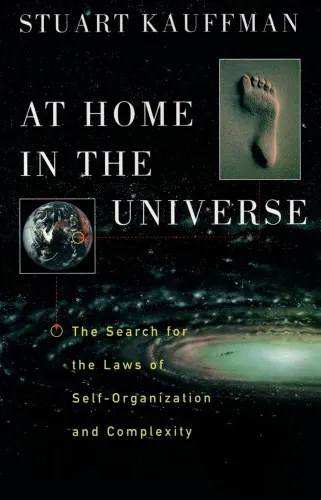
At Home in the Universe
The Search for the Laws of Self-Organization and Complexity
Stuart Kauffman’s At Home in the Universe unveils a scientific revolution centered on spontaneous order in complex systems. Kauffman argues that complexity itself triggers self-organization, revealing life as a natural outcome rather than a chance event. From cell development to cultural evolution, he explores how this principle shapes diverse phenomena. Praised as a visionary by Stephen Jay Gould and Philip Anderson, Kauffman’s work extends Darwin’s theory and offers profound insights into the essence of life.
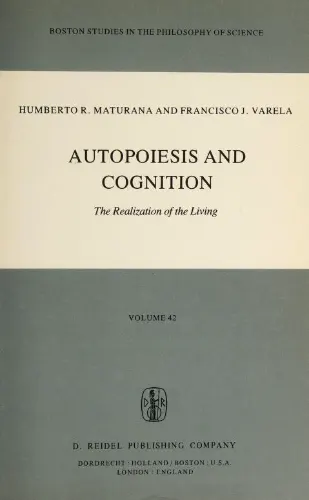
Autopoiesis and Cognition
The Realization of the Living
What makes a living system a living system? What kind of biological phenomenon is the phenomenon of cognition? These two questions have been frequently considered, but, in this volume, the authors consider them as concrete biological questions. Their analysis is bold and provocative, for the authors have constructed a systematic theoretical biology which attempts to define living systems not as objects of observation and description, nor even as interacting systems, but as self-contained unities whose only reference is to themselves. the consequence of their investigations and of their living systems as self-making, self-referring autonomous unities, is that they discovered that the two questions have a common answer: living systems are cognitive systems, and living as a process is a process of cognition. The result of their investigations is a completely new perspective of biological (human) phenomena. During the investigations, it was found that a complete linguistic description pertaining to the "organization of the living" was lacking and, in fact, was hampering the reporting of results. Hence, the authors have coined the word "autopoiesis" to replace the expression "circular organization." Autopoiesis conveys, by itself, the central feature of the organization of the living, which is autonomy.

Build Your Own Damn Wagon
(Laws and Freedom, Habits and Novelty)
"Do not watch, do not consume," implores Terence McKenna, inviting us on a thought-provoking journey to reclaim our humanness. By building our own conceptual wagons, rather than riding ready-made vehicles of meaning, we can travel along unique paths of critical thinking. Once within our own virtual worlds, the wonder of our distinctive minds will be open for discovery.
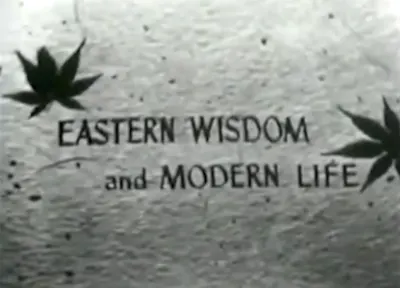
Omnipotence
Eastern Wisdom and Modern Life (Episode 13)
Watts explores the contrast between organic and mechanical world views and the difference between the growing process and the making process, and he explains why one corresponds to a democratic principle and the other to a monarchical hierarchy.

Human Metasystem Transition (HMST) Theory
This article proposes a theory of human evolution termed Human Metasystem Transition (HMST), suggesting that major transitions in human organization have been facilitated by the emergence of new information media and energy sources. It posits that the current convergence of the Internet and renewable energy could catalyze a fourth metasystem transition, leading to a global superorganism with compressed spatial and temporal dimensions of human interaction.
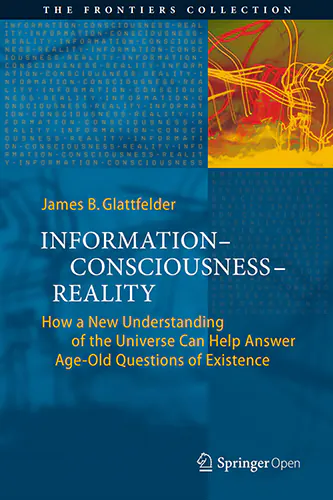
Information — Consciousness — Reality
How a New Understanding of the Universe Can Help Answer Age-Old Questions of Existence
This open access book chronicles the rise of a new scientific paradigm offering novel insights into the age-old enigmas of existence. Over 300 years ago, the human mind discovered the machine code of reality: mathematics. By utilizing abstract thought systems, humans began to decode the workings of the cosmos. From this understanding, the current scientific paradigm emerged, ultimately discovering the gift of technology. Today, however, our island of knowledge is surrounded by ever longer shores of ignorance. Science appears to have hit a dead end when confronted with the nature of reality and consciousness. In this fascinating and accessible volume, James Glattfelder explores a radical paradigm shift uncovering the ontology of reality. It is found to be information-theoretic and participatory, yielding a computational and programmable universe.

Interview on Cybernetics
Heinz von Förster delves into the enigmatic realm of cybernetics. The conversation dances around the essence of this field, exploring its core principles of circularity, self-organization, and the nature of information. Together with Sherwin Gooch, he grapples with profound questions surrounding the definition of life, the Gaia hypothesis, and the tantalizing possibility of replicating human consciousness. Ultimately, the dialogue underscores the intricate interplay between observer and observed, challenging conventional notions of information and reality.

Is the Emergence of Life an Expected Phase Transition in the Evolving Universe?
This article proposes a new definition of life as chemical systems that achieve catalytic closure, constraint closure, and spatial closure. It argues that the emergence of such living systems is an expected phase transition in the evolving universe. However, the ever-creative evolution of life thereafter cannot be explained by physics alone, showing the limits of reductionism. Life is a double miracle—expected yet unexplainable.
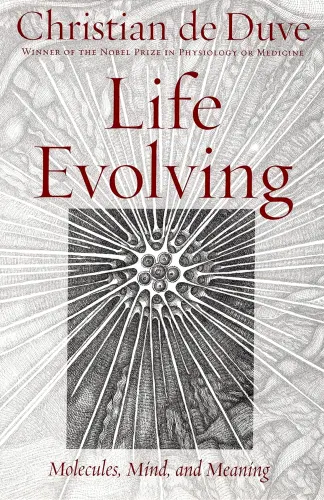
Life Evolving
Molecules, Mind, and Meaning
Christian de Duve, a Nobel Prize-winning biologist, takes readers on a journey through the biological world, from the tiniest cells to the future of life. He argues that life was bound to arise and discusses the evolution of humans, consciousness, language, science, emotion, morality, altruism, and love. De Duve concludes by speculating on humanity's future, including the possibility of evolving into a new species, and shares his thoughts on God and immortality. This wise and humane book sums up his learnings about life and our place in the universe.

Mind Outside Brain
A Radically Non-Dualist Foundation for Distributed Cognition
We approach the problem of the extended mind from a radically non-dualist perspective. The separation between mind and matter is an artefact of the outdated mechanistic worldview, which leaves no room for mental phenomena such as agency, intentionality, or feeling. We propose to replace it by an action ontology, which conceives mind and matter as aspects of the same network of processes. By adopting the intentional stance, we interpret the catalysts of elementary reactions as agents exhibiting desires, intentions, and sensations. Autopoietic networks of reactions constitute more complex super-agents, which moreover exhibit memory, deliberation and sense-making. In the specific case of social networks, individual agents coordinate their actions via the propagation of challenges. The distributed cognition that emerges from this interaction cannot be situated in any individual brain. This non-dualist, holistic view extends and operationalises process metaphysics and Eastern philosophies. It is supported by both mindfulness experiences and mathematical models of action, self-organisation, and cognition.

Nature Loves Complexity
Terence argues that psychedelics reconnect us to archaic values like community, reverence for nature, and direct felt experience. He sees psychedelics as part of nature's tendency to conserve complexity and novelty. McKenna critiques science's misapplication of probability theory and suggests time itself fluctuates, finally proposing an ethics of aligning with nature's creative unfolding.

Nature is the Center of the Mandala
Presented at the Shared Visions bookstore, Terence talks about humanity's path towards greater consciousness, and attempts to take a glance at what comes after the Omega Point.

On Second-Order Observation and Genuine Pretending
Coming to Terms with Society
This paper discusses the meaning of the concept of ‘second-order observation’ used by Niklas Luhmann (1927–1998). Luhmann identifies second-order observation as a defining characteristic of modern world society. According to Luhmann, all social systems construct a social reality on the basis of the observation of observations. Rating agencies in the economy or the peer-review process in the academic system are examples of social mechanisms manifesting second-order observation. Social media also represent organized second-order observation. The paper suggests that in a society based on second-order observation, ‘genuine pretending’ is an adequate mode of existence. This notion is derived from the Daoist text Zhuangzi. It indicates a disassociation from social roles which allows their performers to exercise these roles with ease and, at the same time, maintain a state of sanity. (Published in Thesis Eleven 2017, Vol. 143(I) 28–43.)

On Self-Organizing Systems and Their Environments
An adaptation of an address given at The Interdisciplinary Symposium on Self-Organizing Systems in Chicago, Illinois. Von Förster argues self-organizing systems don't exist in isolation but require an environment to draw energy and order from. He defines measures of order and mechanisms whereby order arises, including via internal "demons" that decrease system entropy and external "demons" that increase maximum possible entropy. Overall, some noise helps systems remain adaptable.

Order Through Fluctuation
Self-Organization and Social System
A thorough mathematical analysis of the spontaneous arising of new order in a fluctuating system, and how insights from dissipative chemical systems may be applied to large-scale social contexts.

Our Cyberspiritual Future
Terence holds court on our civilization's journey toward the eschaton at this weekend Esalen gathering. He riffs on topics from psychedelic states and alien intelligences to time travel and VR. McKenna argues we're evolving toward an unimaginable state of accelerating novelty, propelled by advancing technology. A mind-expanding ride for the open-minded psychonaut or armchair traveler, guided by one of the twentieth century's most eclectic thinkers.
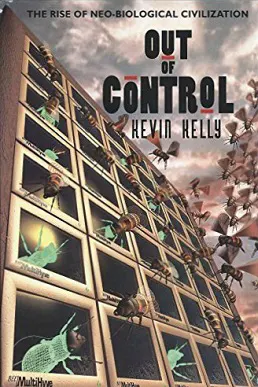
Out of Control
The New Biology of Machines, Social Systems, and the Economic World
Out of Control is a summary of what we know about self-sustaining systems, both living ones such as a tropical wetland, or an artificial one, such as a computer simulation of our planet. The last chapter of the book, “The Nine Laws of God,” is a distillation of the nine common principles that all life-like systems share.

Physics of Life, Time, Complexity, and Aliens
Sara Walker and Lex Fridman explore life’s grand mysteries, touching on the nature of existence and the origins of life to the potential of artificial intelligence and the future of consciousness. Walker’s unique perspective challenges conventional wisdom, inviting us to reconsider our place in the cosmic dance.
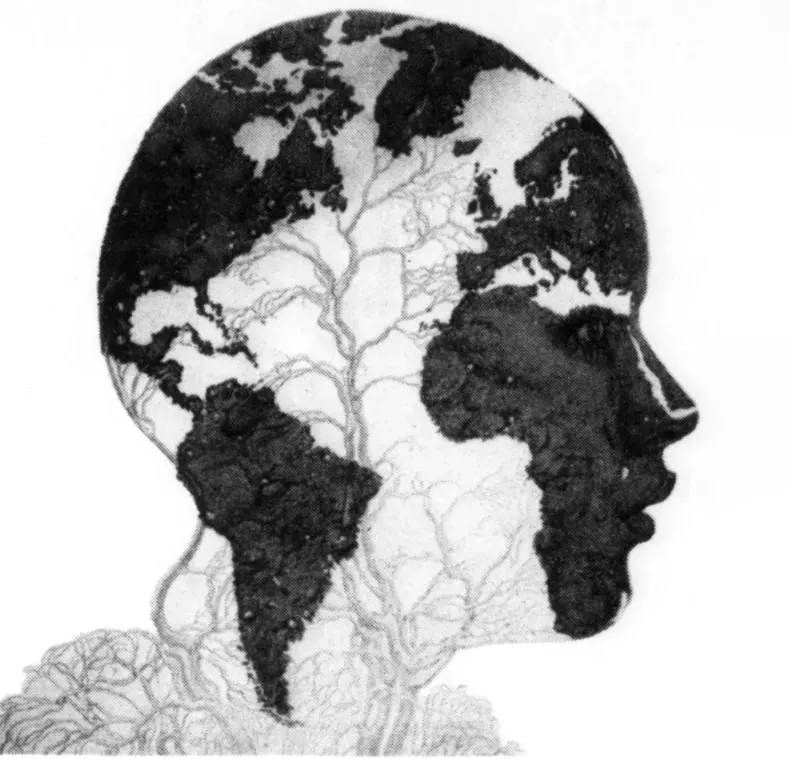
Plan, Plant, Planet
McKenna urges us to look at plants more deeply and find within their biological organization a model for sustainable modern civilization.
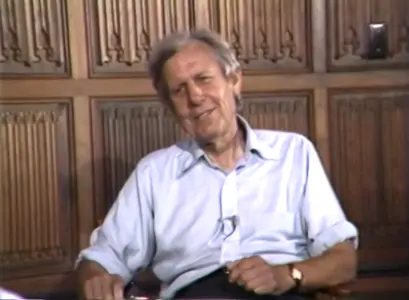
Teilhard de Chardin in the Age of Ecology
Jane Blewett interviews Thomas Berry about Pierre Teilhard de Chardin's philosophy, and how his views should shape the Age of Ecology.
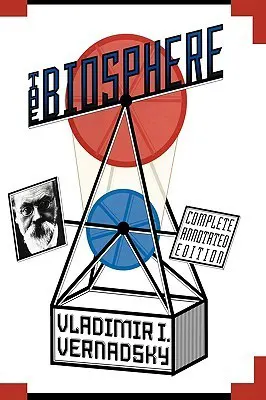
The Biosphere
Long unknown in the West, The Biosphere established the field of biogeochemistry and is one of the classic founding documents of what later became known as Gaia theory. It is the first sustained expression of the idea that living matter is a geological force that can shape Earth’s evolution, changing its landforms, climate, and atmosphere. This groundbreaking work sheds light on the interconnectedness of life and geology, offering profound insights into the Earth's ecological balance and the impact of human activities on the planet.

The Computational Boundary of a “Self”
Developmental Bioelectricity Drives Multicellularity and Scale-Free Cognition
All epistemic agents physically consist of parts that must somehow comprise an integrated cognitive self. Biological individuals consist of subunits (organs, cells, and molecular networks) that are themselves complex and competent in their own native contexts. How do coherent biological Individuals result from the activity of smaller sub-agents?

The Constitution of Nature
Philosophy: East and West, Program 28
Watts unfurls three cosmic tapestries woven by ancient minds: the Western world's vision of nature stitched as a crafted cloth, India's playful drama where God dances every part, and China's Taoist masterwork of nature flowing free like mountain streams. Though the West's thread gave rise to technological gifts, it tangled our hearts. Now the Orient's ancient organic insight whispers fresh hope, kindling new fires of wisdom within.

The Cybernetic Manifesto
Turchin and Joslyn’s manifesto imagines humanity’s next evolutionary leap: just as cells once united to form complex organisms, they foresee humans merging into “super-beings” through direct neural connections, achieving a form of technological immortality. They argue that evolution’s new frontier isn’t biological, but rather conscious and creative, driven by human will instead of natural selection. While not everyone will choose this path of integration, they suggest it’s those who do who will ultimately explore the cosmos.

The Evolution of Responsibility in the World
Teilhard argues that responsibility isn’t just a social rule but a cosmic imperative. The universe, he claims, is hurtling toward unity—collapsing matter into life, life into consciousness. Today, planetary compression—population growth, tech, and globalization—fuels interdependence. Each choice ripples across humanity: a pilot’s error, a scientist’s discovery, a leader’s word. This isn’t mere ethics; it’s evolution’s demand. As humanity merges into a thinking superorganism, responsibility becomes biological—a binding thread in Earth’s living tapestry, transcending laws to reflect our shared cosmic destiny.

The Global Superorganism
An Evolutionary-Cybernetic Model of the Emerging Network Society
The organismic view of society is updated by incorporating concepts from cybernetics, evolutionary theory, and complex adaptive systems. Global society can be seen as an autopoietic network of self-producing components, and therefore as a living system or “superorganism”.

The Inherent Compassion of a Self-Organizing Universe
Buddhism teaches the emptiness of inherent existence: "everything is not a thing." Contemporary physics, chemistry, and biology—seen through the simplifying lens of complexity theory—shows us that the non-dual realm is in complementarity with all of duality, that the presence/absence of boundaries, of separation, is dependent on perspective. "Wisdom" is seeing the world without delusion, and science is one means to washing delusion from one's mind. In doing so, the inherent compassionate nature of the universe and of every being within and of that universe is revealed.

The Nature of Living Systems
General systems behavior theory is a set of related definitions, assumptions, and propositions which deal with reality as an integrated hierarchy of organizations of matter and energy. General systems behavior theory is concerned with a special subset of all systems: the living ones. Even more basic to this presentation than the concept of “system” are the concepts of “space,” “time,” “matter,” “energy,” and “information,” because the living systems discussed in this paper exist in space and are made of matter and energy organized by information.
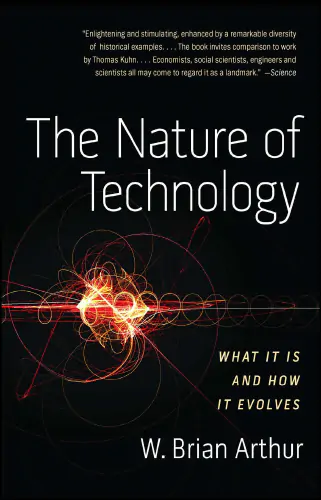
The Nature of Technology
What It Is and How It Evolves
The Nature of Technology reveals technology as a living ecosystem of ideas, where each invention grows from past ones and sparks new possibilities. W. Brian Arthur shows how this self-reinforcing web drives progress, reshapes society, and evolves much like nature itself—messy, unpredictable, and endlessly creative.

The Old and the New Vision
Herbert Günther reveals how ancient Tibetan Buddhist texts offer insights into consciousness that parallel modern scientific discoveries. The Tibetans viewed humans not as isolated beings, but as expressions of universal intelligence, describing three levels: the physical body, an experiential “phantom-like” body, and a mysterious deep structure. Their texts suggest that the universe itself is conducting a grand experiment through human consciousness—playfully creating new possibilities and evolving toward higher forms of order.

The Organization of the Living
A Theory of the Living Organization
What makes something alive? This bold theory argues living systems are like machines that build themselves. Called “autopoietic,” they constantly churn out parts that self-assemble into a whole. Likewise, the nervous system loops activity back into more activity. We don't compute information, but structurally couple to the world. Cognition emerges from how our nervous system meshes with reality, not from complex symbol manipulation as commonly believed.
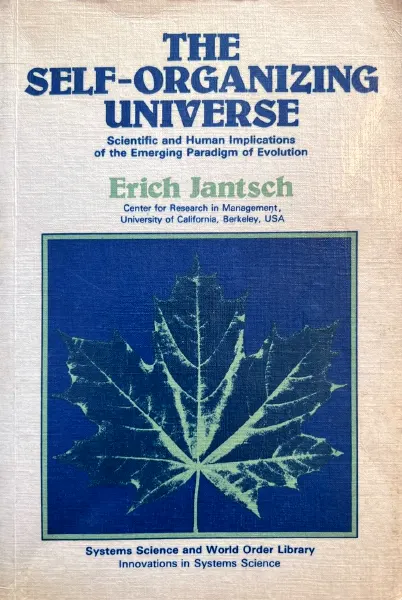
The Self-Organizing Universe
Scientific and Human Implications of the Emerging Paradigm of Evolution
The evolution of the universe—ranging from cosmic and biological to sociocultural evolution—is viewed in terms of the unifying paradigm of self-organization. The contours of this paradigm emerge from the synthesis of a number of important concepts, and provide a scientific foundation to a new world-view which emphasizes process over structure, nonequilibrium over equilibrium, evolution over permanency, and individual creativity over collective stabilization. The book, with its emphasis on the interaction of microstructures with the entire biosphere, ecosystems etc., and on how micro- and macrocosmos mutually create the conditions for their further evolution, provides a comprehensive framework for a deeper understanding of human creativity in a time of transition.

The Stuff of the Universe
Gazing upon the island of Saint Helena during his voyage from New York City to the Cape Peninsula, Teilhard de Chardin articulates his vision of human evolution culminating in cosmic unity with the Christ—the ultimate center of consciousness and complexity in the universe.

The Universe Enlightened
Harding argues that awakening isn’t private but cosmic: to truly know yourself is to rediscover a living, intelligent universe. Modern science, he claims, quietly supports this ancient vision. When the illusion of a separate self dissolves, the universe itself wakes up as home, alive and coherent.

The Urban Effect
A Doctrine of the Infant God
Like a cosmic infant slowly learning to walk, reality is toddling towards its divine potential in this essay by Soleri. Through the urban effect of dense interactions, lifeless matter evolves in complexity and miniaturization, transforming into living spirit. The cosmic journey culminates when all moments coexist in esthetic equity.
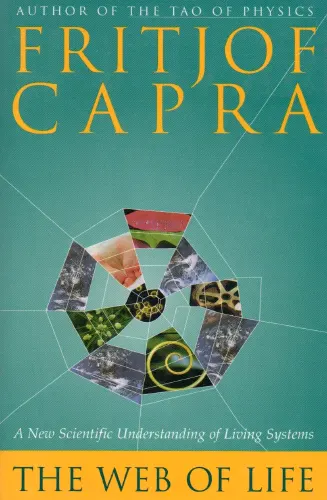
The Web of Life
A New Scientific Understanding of Living Systems
During the past twenty-five years, scientists have challenged conventional views of evolution and the organization of living systems and have developed new theories with revolutionary philosophical and social implications. Fritjof Capra has been at the forefront of this revolution. In The Web of Life, Capra offers a brilliant synthesis of such recent scientific breakthroughs as the theory of complexity, Gaia theory, chaos theory, and other explanations of the properties of organisms, social systems, and ecosystems. Capra's surprising findings stand in stark contrast to accepted paradigms of mechanism and Darwinism and provide an extraordinary new foundation for ecological policies that will allow us to build and sustain communities without diminishing the opportunities for future generations.

The World is a Network
In this discussion, Fritjof Capra discusses systems thinking, the cognitive dimension of life, nonlinear causality, emergence of novelty in living systems, ethics, world problems and solutions, transformative learning, and the importance of community. He covers the systems view of life from his book and emphasizes relationships, interconnectedness, and sustainability.
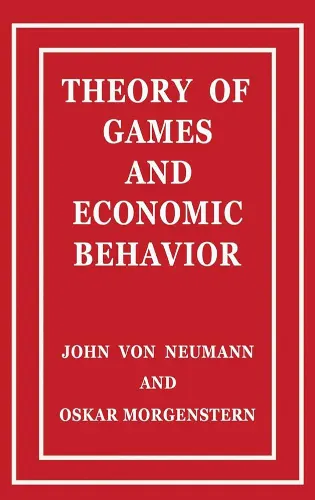
Theory of Games and Economic Behavior
This is the classic work upon which modern-day game theory is based. What began more than sixty years ago as a modest proposal that a mathematician and an economist write a short paper together blossomed, in 1944, when Princeton University Press published Theory of Games and Economic Behavior. In it, John von Neumann and Oskar Morgenstern conceived a groundbreaking mathematical theory of economic and social organization, based on a theory of games of strategy. Not only would this revolutionize economics, but the entirely new field of scientific inquiry it yielded—game theory—has since been widely used to analyze a host of real-world phenomena from arms races to optimal policy choices of presidential candidates, from vaccination policy to major league baseball salary negotiations. And it is today established throughout both the social sciences and a wide range of other sciences.
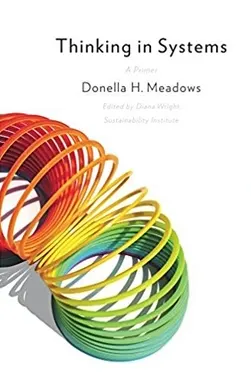
Thinking in Systems
A Primer
Donella Meadows provides an accessible introduction to systems thinking, explaining how to understand complex systems and interact within them more effectively. She describes different types of systems, including physical and social systems, and key system concepts like stocks, flows, feedback loops, leverage points, and delays. Meadows illustrates these ideas through real-world examples and models, and argues that adopting a systems perspective can help address many of society's challenges in areas like sustainability, politics, and business. She aims to teach readers to think broadly about interconnections, change over time, and root causes so they can better understand and influence systems for desired outcomes.
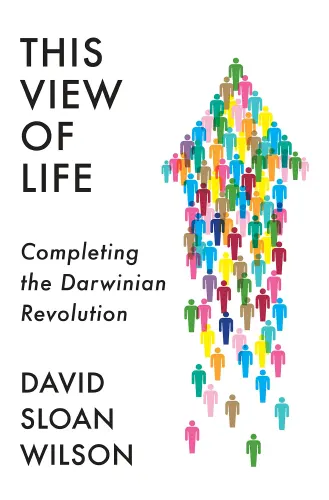
This View of Life
Completing the Darwinian Revolution
It is widely understood that Charles Darwin’s theory of evolution completely revolutionized the study of biology. Yet, according to David Sloan Wilson, the Darwinian revolution won’t be truly complete until it is applied more broadly—to everything associated with the words “human,” “culture,” and “policy.” In a series of engaging and insightful examples—from the breeding of hens to the timing of cataract surgeries to the organization of an automobile plant—Wilson shows how an evolutionary worldview provides a practical tool kit for understanding not only genetic evolution but also the fast-paced changes that are having an impact on our world and ourselves. What emerges is an incredibly empowering argument: If we can become wise managers of evolutionary processes, we can solve the problems of our age at all scales—from the efficacy of our groups to our well-being as individuals to our stewardship of the planet Earth.
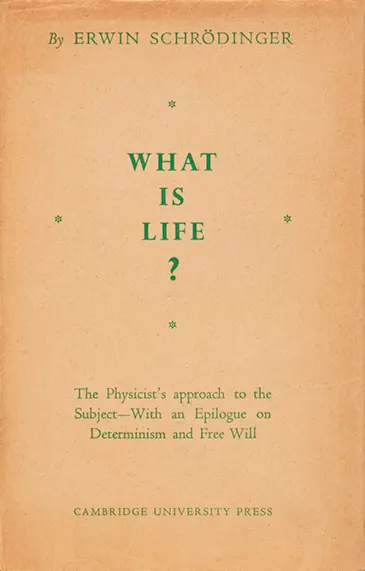
What Is Life?
The Physical Aspect of the Living Cell
This book was based on a course of public lectures delivered by Schrödinger in February 1943, under the auspices of the Dublin Institute for Advanced Studies at Trinity College, Dublin. The lectures attracted an audience of about 400, who were warned "that the subject-matter was a difficult one and that the lectures could not be termed popular, even though the physicist’s most dreaded weapon, mathematical deduction, would hardly be utilized." Schrödinger's lecture focused on one important question: How can the events in space and time—which take place within the spatial boundary of a living organism—be accounted for by physics and chemistry?

What is Life?
Teilhard says life is not an anomaly, but a universal cosmic force that builds up complexity. He sees it complementing entropy, and the riddle to be solved lies in how they ultimately balance out.

What is the Noosphere?
Planetary Superorganism, Major Evolutionary Transition, and Emergence
Picture Earth evolving a new layer—not of rock or life, but of thought and technology. This “noosphere” is like a planetary brain emerging through our global networks, satellites, and collective intelligence. The paper explores how this mysterious transformation could represent Earth’s next evolutionary leap, potentially leading to planetary consciousness or even contact with other cosmic minds. It’s happening right now, though we’re still figuring out how to guide this planetary metamorphosis.

Why Is Anything Conscious?
This paper tackles the hard problem of consciousness by exploring how biological systems evolve to interpret the world. The authors argue that natural selection makes organisms self-organize into systems that feel, learn, and act—starting with basic self-awareness and climbing to complex human-level understanding. Their bold claim? Consciousness isn't an add-on but a deep, essential part of how life adapts to survive.